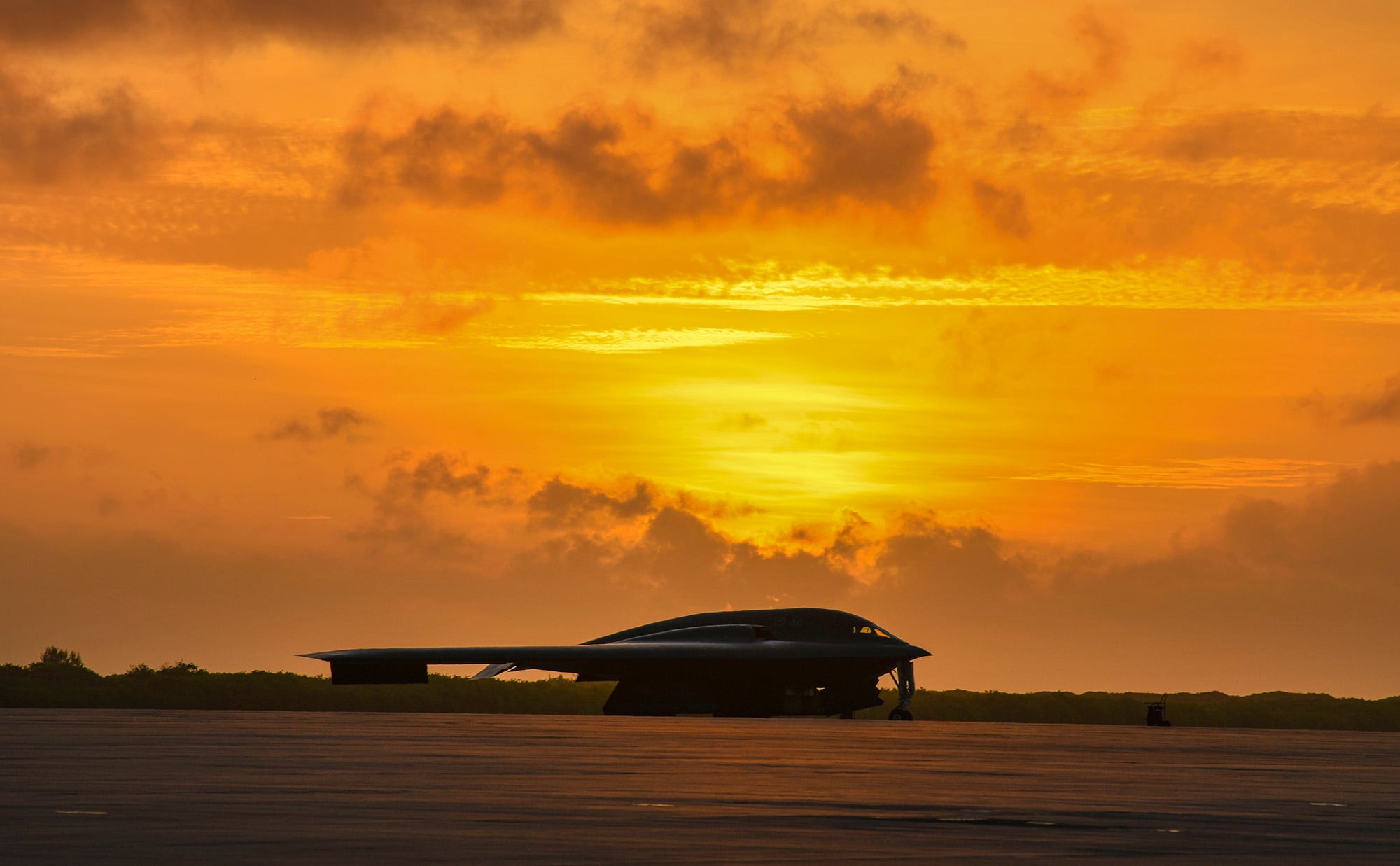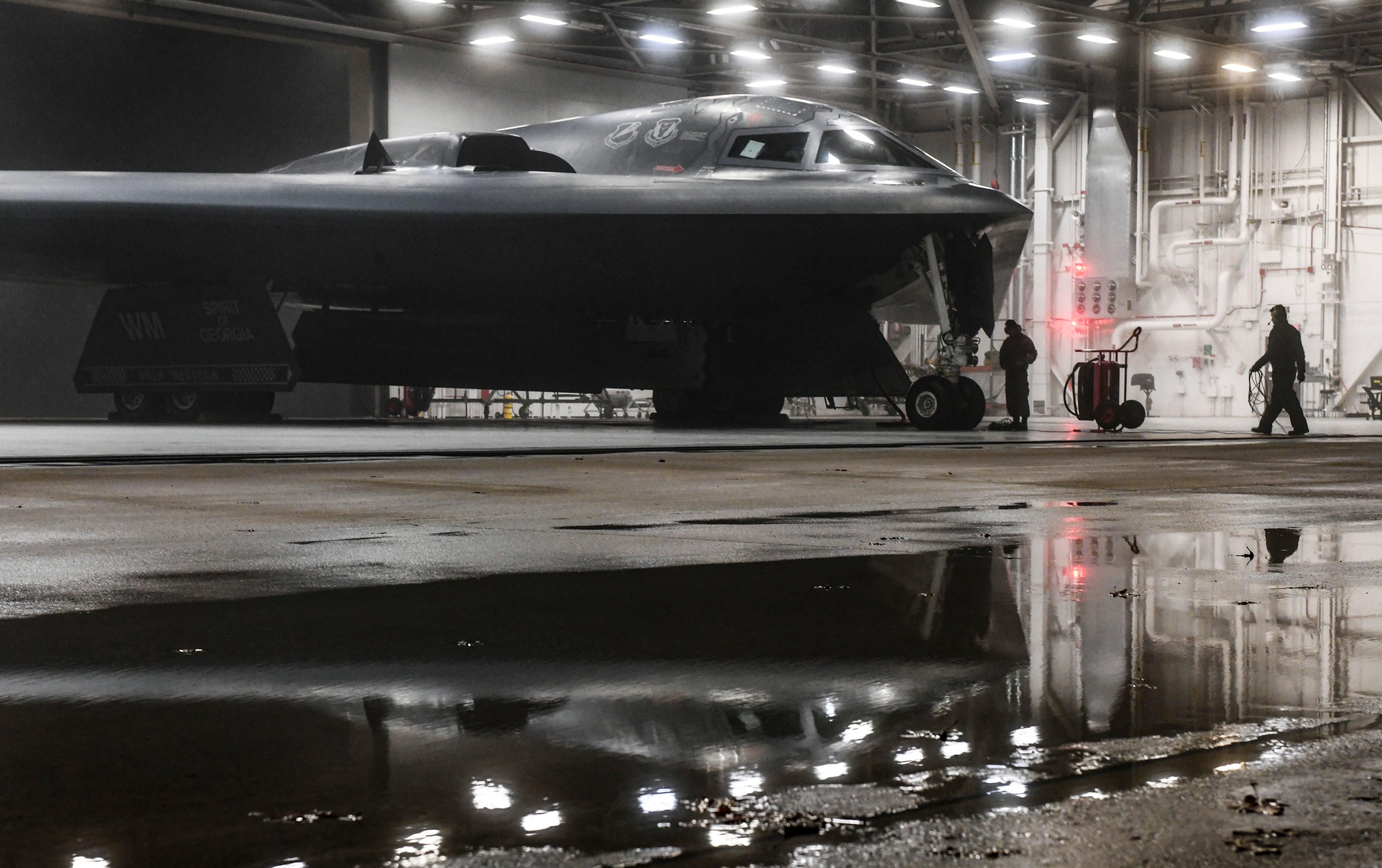B-1B Lancer jets this week deployed to Naval Support Facility Diego Garcia in the Indian Ocean for the first time in more than 15 years, again boosting the bomber presence on the British atoll.
The U.S. military uses Diego Garcia as a strategic point for launching operations in the Indo-Pacific, and has brought all three types of bomber aircraft to the atoll within the past two years. The B-1 does not wield nuclear weapons, but carries the Air Force’s largest payload of guided and unguided conventional weapons.
Air Force photos showed an undisclosed number of B-1Bs arriving in the British Indian Ocean Territory on Sunday. About 200 airmen from the 28th Bomb Wing at Ellsworth Air Force Base, South Dakota, accompanied the planes, the service said.
RELATED

An Ellsworth spokesperson did not provide the number of bombers deployed, or how long they will remain overseas, by press time.
“Bomber Task Force missions, in support of [U.S. Indo-Pacific Command’s] operational and strategic objectives, are extremely valuable to our aircrew because of the multi-country integration opportunities,” Lt. Col. Ross Hobbs, the 37th Bomb Squadron’s operations director, said in a release Tuesday. “They also give us the opportunity to showcase the unmatched range, speed and lethality of the B-1.”
The short-notice task force deployments aim to reassure regional allies and pose a warning to adversaries in the area. The Air Force is expanding the tours to more locations around the globe in lieu of long-term visits to well-established military bases that could be more vulnerable if conflict erupts.
The Lancers showed up after China began holding military air drills near Taiwan and launched a joint naval exercise with Russia in the Sea of Japan. Taiwan argues it is an independent country; China claims it as a territory.
Training near Taiwan would also put Chinese assets within 2,000 miles or so from Andersen AFB on Guam, an American military aviation hub in the Pacific Ocean.
Andrew Banfield, a senior lecturer at the Australian National University, suggested in August 2020 that sending American bombers to Diego Garcia is a way of warning the Chinese away from Guam.
RELATED

“Deploying long-range bombers to Diego Garcia and the carrier group into the South China Sea sends a clear message from the U.S. that the Chinese government should not think about attacking Guam” with ballistic or cruise missiles, Banfield said. “If China makes such a move, the US could launch long-range stealth bombers from Diego Garcia against a range of targets, including the [People’s Liberation Army] aircraft carrier Shandong, in the South China Sea.”
Banfield weighed in shortly after the U.S. dispatched three B-2 Spirit stealth bombers and six B-52 Stratofortress bombers to the Indian Ocean archipelago. Still, he warned that sending several bombers is “merely an attention-getter,” not an overwhelming show of force.
The bombers could also fly sorties in nearby U.S. Central Command, U.S. Africa Command and U.S. European Command during their stay on Diego Garcia.
Rachel Cohen is the editor of Air Force Times. She joined the publication as its senior reporter in March 2021. Her work has appeared in the Washington Post, the Frederick News-Post (Md.), Air and Space Forces Magazine, Inside Defense, Inside Health Policy and elsewhere.





